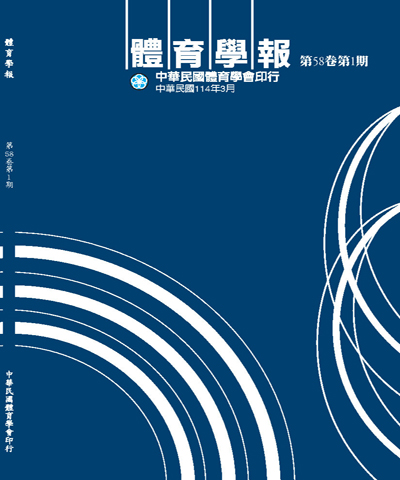
體育學報/Physical Education Journal
- Ahead-of-Print
中華民國體育學會/National Society of Physical Education, Republic of China,正常發行
選擇卷期
- 期刊
本研究旨在探討大專體育教學評鑑指標的構成要素為何。採用質與量雙重並進的研究方法,研究對象包含北、中、南、東共八所大學之師生,以自編之問卷調查表及專家訪談方式進行資料蒐集,並將訪談結果、意見調查資料進行臨界比值、積差相關係數、信、效度及構念效度等考驗,本研究之指標建構包括: 大指標:共六大構面:教學規劃與凖備、教學實施與策略的運用、班級經營與學習氣氛營造、教師進修與專業成長、溝通與合作、教學評量與回積。 次指標:共四十一題項,1.教學規劃與凖備構面包含七個題項、2.教學實施與策略的運用構面包含七個題項、3.班級經營與學習氣氛營造構面包含十個題項、4.教師進修與專業成長構面包含六個題項、5.溝通與合作構面包含六個題項、6.教學評量與回饋構面包含五個題項。
- 期刊
The purpose of this study was to investigate the effects of cooperative learning and mastery learning on volleyball skill learning. A total of 116 sample students were separated into two groups, of which 58 were in the cooperative learning group, and 58 were in the mastery learning group. Cooperative learning method was used for the former group, and mastery learning method was used for the latter. Students in each group were further divided into smaller teams heterogeneously according to their pre-study evaluations. There was an average of 7 to 8 students in every team. Learning achievements of these students were evaluated immediately after 8 weeks of the learning experiment. Our results showed that: 1.Both the cooperative learning and mastery learning groups showed significant improvement on their “learning achievements” (p<.05). 2. The “learning achievement” of the mastery learning group was significantly higher than the cooperative learning group (p<.05). In conclusion, we found that the “learning achievement” of the mastery learning group was significantly higher than the “cooperative learning group”.
- 期刊
本研究的目的是利用Rasch測量來等化分組循環賽的成績表現。研究對象為丹鳳國小籃球3對3門牛賽(3 on 3 baskethall games)的分組循環賽,透過兩階段Rasch模式等化和單階段垂直等化方法(one-step vertical equating),建立分組循環的所有參賽者的能力校凖。結論是Rasch測量的單階段垂直等化方法可以提供分組循環賽所有參賽者精確的校凖能力。
- 期刊
This research is based on plyometric training theory. The experimental tool is a passive repeatedly plyometric machine. The purpose of this research is to establish a theoretical basis for passive repeatedly plyometric training on strength and power. The research is also to compare and analyze the effects with different variables (different training frequency; different motion frequency and load-control with increasing speed) on strength and power. This research was a one-year program. The first step was to use different motion frequency training ( 30 RPM、60 RPM、90 RPM、120 RPM、150 RPM) and load-control with increasing speed (from 30 RPM→60 RPM→90 RPM→120 RPM→150 RPM) . Subjects are 48 Physical Education Department students at Hualien Teachers College. Subjects were divided into six groups. They trained three times a week for eight weeks. SPSS for Windows 10.0 version was used for statistical analysis. The results are: 1. Although some items didn’t reach significance, but every group showed improvement after training. 2. The group trained with load-control increasing speed has the best effect. Four sports ability tests reached significant differences (p<.05) 3. There are significant differences (p<.05) in vertical jump, 30-meter run, and 1RM squat, except standing jump. 4. Among the training methods, 120 RPM can help to promote speed the most. 5. To promote strength, load-control with increasing speed was the best training method. 6. Load-control with increasing speed method can help both bounce jump ability and strength. Conclusions: The best way to promote strength was load-control with increasing speed training. The result agree with the physical training principle of progressing increasing over-loading.

